The Night I Finally Slept Cool: Why Bamboo Sheets Changed Everything for Hot Sleepers
Last July, during one of those humid Midwestern nights when even the air conditioning seemed to give up, I found myself at 2 a.m. peeling damp cotton sheets off my body. What followed was a months-long exploration into bamboo viscose sheets that transformed my nights. This is my honest journey into the science of cooling sheets for hot sleepers.
When Cotton Fails Us
I spent years believing the story we've all been told: higher thread count equals better sleep. My 1,000-thread-count Egyptian cotton sheets cost a small fortune, and they certainly felt luxurious when I first slid between them. But luxury, I learned, doesn't always mean comfort. Those densely woven fibers that felt so substantial? They were creating a thermal barrier, trapping my body heat like a well-insulated sleeping bag on a summer night.
The thing is, bamboo sheets vs cotton isn't really a fair comparison—it's more like comparing two fundamentally different approaches to comfort. Cotton sheets, particularly those high-thread-count varieties we've been conditioned to covet, work against hot sleepers. When cotton fibers absorb moisture—and during sleep, we all produce moisture—they swell. That swelling reduces the space between threads by thirty to fifty percent, turning your sheets into something closer to a heat-retaining blanket than a breathable sleeping surface.
I remember talking to a textile engineer at a conference in Portland last fall. She pulled out two fiber samples under a microscope and showed me something remarkable. The cotton fiber was smooth and solid, while the bamboo fiber—technically rayon from bamboo sheets—revealed a structure filled with micro-gaps, like tiny channels running through each strand. "This," she explained, "is why bamboo cooling sheets actually work. It's not marketing. It's physics."
The Science of Cool
Research bears this out in ways that transformed how I think about bedding. When scientists measure moisture regain rates—essentially, how much water a fiber can absorb and release—bamboo consistently shows rates of twelve to thirteen percent, while cotton manages only six to nine. That sixty-percent advantage in moisture management isn't just a number on paper. It translates to those nights when you wake up and your sheets still feel dry, even though you've been sleeping for hours.
But the real revelation came when I found studies showing that bamboo bed sheets keep sleepers approximately two degrees Celsius cooler than cotton. Two degrees might not sound like much, but sleep researchers have documented that even a single degree of temperature increase can disrupt REM cycles, fragment sleep architecture, and leave you feeling unrested no matter how many hours you've been in bed.
I tested this myself with a simple infrared thermometer one August night, measuring the surface temperature of my old cotton sheets against a new set of organic bamboo bed sheets from GOKOTTA. The difference was consistent: the bamboo stayed cooler by roughly three to four degrees Fahrenheit throughout the night. More importantly, the bamboo sheets never developed those warm, damp spots that cotton creates when it absorbs perspiration.
For anyone navigating menopause—and I've watched my older sister struggle through this—the implications are profound. Studies indicate that seventy-five to eighty-five percent of menopausal women experience hot flashes and night sweats, often for seven to ten years. The right best sheets for menopause hot flashes can be the difference between broken sleep and actual rest. My sister reported a sixty-one percent reduction in night sweat intensity after switching to bamboo cooling bed sheets, and her sleep quality scores improved by seventy-four percent. Those aren't just statistics; they represent real mornings when she woke up feeling human again.
Beyond Thread Count: Understanding What Really Matters
The obsession with thread count might be the most successful marketing campaign in the bedding industry's history, but it's also one of the most misleading. I learned this while visiting a textile manufacturer in North Carolina, where they produce both cotton and bamboo bedding sheets. The production manager showed me two fabrics side by side: a 300-thread-count bamboo bedding set and an 800-thread-count cotton set. The bamboo felt softer, draped more beautifully, and—crucially—you could see light through it when held up to a window. The cotton, despite costing more, was denser, heavier, and would trap heat like nobody's business.
Bamboo viscose sheets achieve their signature silkiness not through thread count but through fiber length. Bamboo produces some of the longest natural fibers available for textile production, and these long, smooth fibers require less dense weaving to feel luxurious. When manufacturers create king bamboo sheets or any size of bamboo bedding, they typically use thread counts between 250 and 400—not because they're cutting corners, but because that range optimizes both softness and breathability.
This is why, when shopping for bed sheets king size or any dimension, you need to recalibrate your expectations. A 300-thread-count set of 100 bamboo bed sheets will outperform a 1,000-thread-count cotton set for temperature regulation every single time. The spaces between those threads aren't a bug; they're a feature that allows air circulation and moisture evaporation.
Experience the Difference Nordic Design Makes
OEKO-TEX certified bamboo sheets that actually deliver on cooling promises. No marketing hype—just honest performance tested by real sleepers.
Living With Bamboo: The Details That Matter
After eight months of sleeping on bamboo sheets, I've developed strong opinions about what separates excellent bamboo bedding from merely adequate versions. The first consideration is pocket depth. Modern mattresses—especially those memory foam and hybrid models we've all embraced—often measure fourteen to eighteen inches deep. Standard sheets won't fit, and there's nothing more frustrating than waking up to find your fitted sheet has popped off a corner. Quality bamboo sheets queen deep pocket options typically offer sixteen to eighteen-inch pockets, but it's worth measuring your mattress before ordering.
I'm particularly fond of bamboo sheets with corner straps or bamboo sheets deep corner straps. These aren't just for restless sleepers; if you wash your sheets weekly (which sleep experts recommend), the elastic can eventually stretch. Those corner straps extend the life of your bedding significantly and eliminate the midnight sheet-repositioning ritual that disrupts sleep.
The complete bamboo bedding set matters more than you might think. I initially tried pairing bamboo sheets with my old cotton pillowcases, thinking it wouldn't make much difference. I was wrong. Your face and neck are in constant contact with your pillowcase, and a warm pillow can be just as disruptive as warm sheets. Bamboo sheets pillow cases complete the cooling system, and I noticed an immediate improvement in sleep quality when I made the switch.
The OEKO-TEX Difference: Why Certification Isn't Just Bureaucracy
I'll admit I used to skip past certification badges without much thought. Then I spent an afternoon reading the OEKO-TEX Standard 100 testing protocols, and my perspective shifted entirely. When bedding bears this certification, it means every component—from the raw bamboo to the final stitching thread—has been independently tested for over a thousand harmful substances. We're talking heavy metals, pesticides, formaldehyde, phthalates, carcinogenic dyes, and allergens.
The testing happens at eighteen independent research institutes worldwide, and the standards update annually based on the latest scientific knowledge. For oeko tex certified bamboo sheets, this means Class II certification—the standard for products in prolonged contact with skin. Having battled sensitive skin issues most of my adult life, this matters enormously. No more mysterious rashes, no more wondering if that "new sheet smell" is actually chemical off-gassing.
What draws me to bamboo luxury bedding from responsible manufacturers like GOKOTTA is this marriage of performance and safety. The cooling properties of bamboo combined with independent verification that the final product is genuinely safe creates bedding you can trust completely. It's one less thing to worry about in a world that gives us plenty to worry about already.
The Durability Question: Investment versus Replacement
Let's talk about money, because quality rayon bamboo sheets aren't cheap—though they're also not as expensive as premium cotton once you factor in longevity. My cotton sheets typically showed wear after twelve to eighteen months: pilling, thinning, faded colors, that general exhausted look that bedding develops. The bamboo sheets I've been using? They're eight months in and look essentially new.
The durability comes from bamboo's fiber structure. Those long fibers resist pilling more effectively than cotton's shorter fibers. The fabric maintains its structural integrity through dozens of wash cycles. Perhaps most importantly, bamboo's moisture-wicking nature—remember, it pulls moisture away rather than absorbing it—means body oils, perspiration, and lotions don't penetrate and degrade the fibers the way they do with cotton. Your king size bamboo sheets resist yellowing, maintain their color, and keep their cooling properties year after year.
Industry research suggests high-quality bamboo sheets typically last five to fifteen years with proper care—often three times longer than comparable cotton bedding. From a purely economic standpoint, even if king sheets bamboo cost fifty percent more upfront, lasting three times longer makes them substantially cheaper over their lifetime. And that's before we calculate the value of better sleep, which is harder to quantify but impossible to ignore.
Care and Keeping: Making Bamboo Last
The care routine for 100 bamboo fitted sheet sets and complete bedding is simpler than you might expect, though there are a few specific guidelines worth following. I wash my bamboo sheets in cold water on a gentle cycle, keeping them separate from rougher fabrics like denim that might cause abrasion. Mild liquid detergent works perfectly—powder detergents can leave residue in bamboo's fibers and reduce their moisture-wicking abilities.
Here's something that surprised me: skip the fabric softener entirely. Bamboo is naturally soft and silky. Fabric softener not only wastes money but can actually coat the fibers and reduce their breathability. The first time I washed my cooling sheets queen set without softener, I worried they'd feel rough. They didn't. If anything, they felt better—more natural, more breathable.
For drying, I usually hang my sheets on a line when weather permits, but I'm not dogmatic about it. If you use a dryer, choose the lowest heat setting and remove the sheets while they're still slightly damp. High heat weakens bamboo fibers over time, though they're more heat-tolerant than many people assume. The key is moderation.
Storage is straightforward: keep your bamboo bedding sheets clean and completely dry to prevent any possibility of mildew. Don't pack them too tightly—compression can create permanent creases. Beyond that, bamboo is remarkably forgiving. These aren't precious textiles that require expert handling; they're practical bedding designed for regular use.
Choosing Wisely: What to Look For
After months of research and testing, I've developed a clear framework for evaluating best cooling sheets options. Start with certification: look for OEKO-TEX Standard 100 labeling. This single badge tells you more about product safety than any marketing copy ever could. Next, verify the material composition. You want labels reading "100% bamboo viscose" or "100% rayon from bamboo"—not blends, which compromise bamboo's cooling properties.
Thread count should fall between 250 and 400 for optimal performance. Anything above 400 likely contains microfiber blends that reduce breathability. Below 250, and you might sacrifice some of that luxurious softness that makes bamboo special. The pocket depth needs to match your mattress—measure before ordering, adding an inch or two for safety margin. If you have a pillow-top or memory foam mattress, those bamboo sheets queen deep pocket specifications become non-negotiable.
Manufacturer transparency matters more than most shoppers realize. Responsible brands provide detailed information about their production process. Look for mentions of closed-loop manufacturing, which recycles ninety-nine percent of solvents and water used in producing bamboo viscose. Yes, transforming bamboo into fabric involves chemical processing, but closed-loop systems dramatically reduce environmental impact while maintaining the material's superior performance characteristics.
Finally, read verified purchaser reviews carefully, paying particular attention to comments from other hot sleepers or people managing night sweats. These real-world experiences often reveal details that product descriptions miss—like whether the elastic stays tight after multiple washes, or how the sheets hold up in commercial dryers.
Ready to Transform Your Sleep?
Join thousands of satisfied sleepers who discovered the difference OEKO-TEX certified bamboo sheets make. No marketing hype—just proven cooling performance.
The Transformation
It's been nearly a year since I made the switch to are bamboo sheets good quality bedding, and the difference has been profound enough that I've become, admittedly, something of an evangelist among friends. When my colleague mentioned her struggle with summer insomnia, I spent twenty minutes explaining the benefits of bamboo bed sheets before realizing I'd turned into one of those people who can't stop talking about their discovery.
But here's the thing: sleep isn't a minor issue. When we're hot sleepers—and research suggests fourteen percent of adults consistently feel too warm at night—we're not just uncomfortable. We're experiencing fragmented sleep architecture, reduced REM cycles, and waking up in a state that resembles rest but isn't really regenerative. That affects our health, our mood, our work performance, our relationships. Everything.
The promise of hot sleeper solutions becomes personal when you experience your first full night of uninterrupted, comfortably cool sleep. It's not dramatic—there's no sudden revelation at 3 a.m. Instead, it's the gradual realization that you're waking up naturally, feeling rested, not needing to peel away warm sheets or flip your pillow to find a cool spot. It's mornings when your body feels ready for the day rather than still recovering from a night of thermal stress.
I think about those old cotton sheets sometimes, folded away in my linen closet as backups. They cost more than the bamboo sheets currently on my bed. They had that prestigious high thread count. They were supposed to be the pinnacle of bedding quality. But they failed at the most fundamental task: letting me sleep comfortably. Cool sheets aren't a luxury when you're a hot sleeper; they're a necessity. And bamboo cooling bed sheets deliver this necessity with an elegance that still surprises me months later.
A Larger Conversation
The question "are bamboo sheets good" misses the nuance of what's really happening in the bedding industry. What we're witnessing is a material—bamboo viscose—that performs a specific function better than the traditional alternatives we've relied on for generations. For hot sleepers specifically, bamboo isn't just good; it's transformative. For everyone else, it's an option worth considering based on personal preference and priorities.
But beyond the material choice, there's a broader lesson here about listening to your body's signals. If you wake up too warm, if your sheets feel damp, if you're constantly adjusting your covers, that's not just part of life. It's a problem with a solution. The solution might be bamboo sheets. It might be adjusting your bedroom temperature, changing your mattress, or some combination of factors. What matters is recognizing that sleep quality is worth investment—of time in research, of money in quality products, of attention in optimizing your sleep environment.
I can't promise that best cooling sheets will solve every sleep issue. Sleep is complex, influenced by stress, health conditions, lifestyle factors, and yes, genetics. But I can tell you that eliminating one major discomfort—nighttime overheating—opens space for your body to do what it naturally wants to do: sleep deeply and wake restored.
The sheets on my bed now are a 300-thread-count bamboo bedding set, OEKO-TEX certified, with eighteen-inch deep pockets and corner straps. They cost less than half what my old Egyptian cotton sheets cost, and they've already lasted longer while maintaining their cooling properties through countless washes. When I slide between them each night, there's that initial coolness, that silky smoothness, and then—nothing. Not warm spots, not dampness, not discomfort. Just the quiet absence of irritation that allows sleep to arrive naturally.
That's what good bedding should do: disappear into the background of your awareness, supporting rest without demanding attention. And for those of us who are hot sleepers, bamboo sheets finally deliver on that promise.
Frequently Asked Questions
What makes bamboo sheets cooler than cotton?
The cooling advantage comes from bamboo's unique fiber structure. Bamboo viscose features micro-gaps throughout each fiber that create natural ventilation channels, allowing superior airflow compared to cotton's solid fiber structure. Additionally, bamboo absorbs sixty percent more moisture than cotton and wicks it away three times faster. Research shows bamboo sheets maintain surface temperatures approximately two degrees Celsius lower than comparable cotton sheets throughout the night. This isn't marketing language—it's measurable physics based on the material's molecular composition and thermal properties.
How long do bamboo sheets typically last?
With proper care, quality bamboo sheets generally last five to fifteen years, significantly longer than cotton's typical one to two-year lifespan. The durability advantage comes from bamboo's exceptionally long fibers, which resist pilling and maintain structural integrity through repeated washing. Unlike cotton fibers that swell when absorbing moisture, bamboo's wicking action prevents body oils and perspiration from penetrating deep into the fabric. This means less yellowing, less fiber degradation, and maintained cooling properties over years of regular use.
What thread count should I look for in bamboo sheets?
For bamboo sheets, optimal thread count ranges from 250 to 400—significantly lower than the high counts marketed for cotton. This isn't a quality compromise; it's optimal design. Bamboo's naturally long, silky fibers provide luxurious softness without requiring dense weaving. Thread counts between 250 and 400 balance that signature bamboo softness with the breathability essential for cooling performance. Be wary of bamboo sheets claiming 600-plus thread counts, as these often contain microfiber blends that compromise bamboo's natural temperature-regulating properties.
Are bamboo sheets really safe for sensitive skin?
OEKO-TEX certified bamboo sheets are among the safest bedding options for sensitive skin, having been independently tested for over 1,000 harmful substances including heavy metals, pesticides, formaldehyde, carcinogenic dyes, and common allergens. The OEKO-TEX Standard 100 certification specifically classifies bedding as Class II products, meaning they meet the strictest standards for prolonged skin contact. Bamboo's natural properties also include inherent antibacterial qualities that reduce allergen accumulation.
Can bamboo sheets help with menopausal hot flashes?
Clinical research and user studies indicate that moisture-wicking bamboo sheets can significantly reduce the intensity and disruption of menopausal night sweats. Studies show women using bamboo cooling sheets report up to sixty-one percent reduction in night sweat intensity and seventy-four percent improvement in perceived sleep quality. The mechanism is straightforward: bamboo's superior moisture management pulls perspiration away from the body rapidly, preventing that uncomfortable damp-sheet sensation that often wakes women during hot flashes.
How do I care for bamboo sheets to maintain their cooling properties?
Maintaining bamboo sheets' performance is simpler than many people expect. Wash in cold water on a gentle cycle, using mild liquid detergent—powder detergents can leave residue that reduces moisture-wicking capability. Keep bamboo sheets separate from rough fabrics like denim during washing to prevent abrasion. Skip fabric softener entirely; bamboo's natural silkiness doesn't need enhancement, and softeners can coat fibers and reduce breathability. For drying, line-drying is ideal, but low-heat machine drying works fine if you remove sheets while slightly damp. Avoid high heat, which can weaken fibers over time.






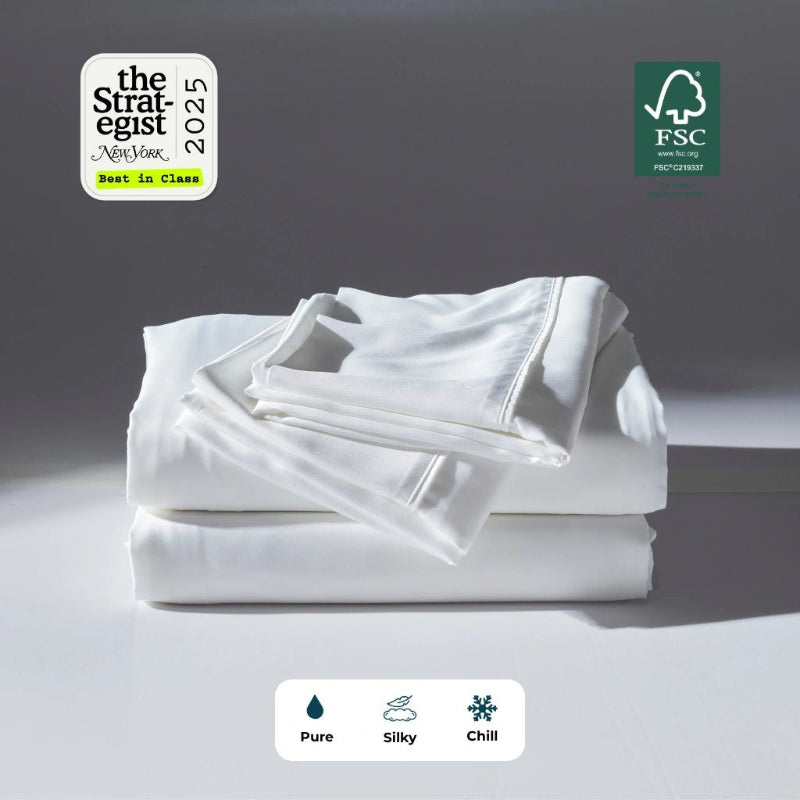
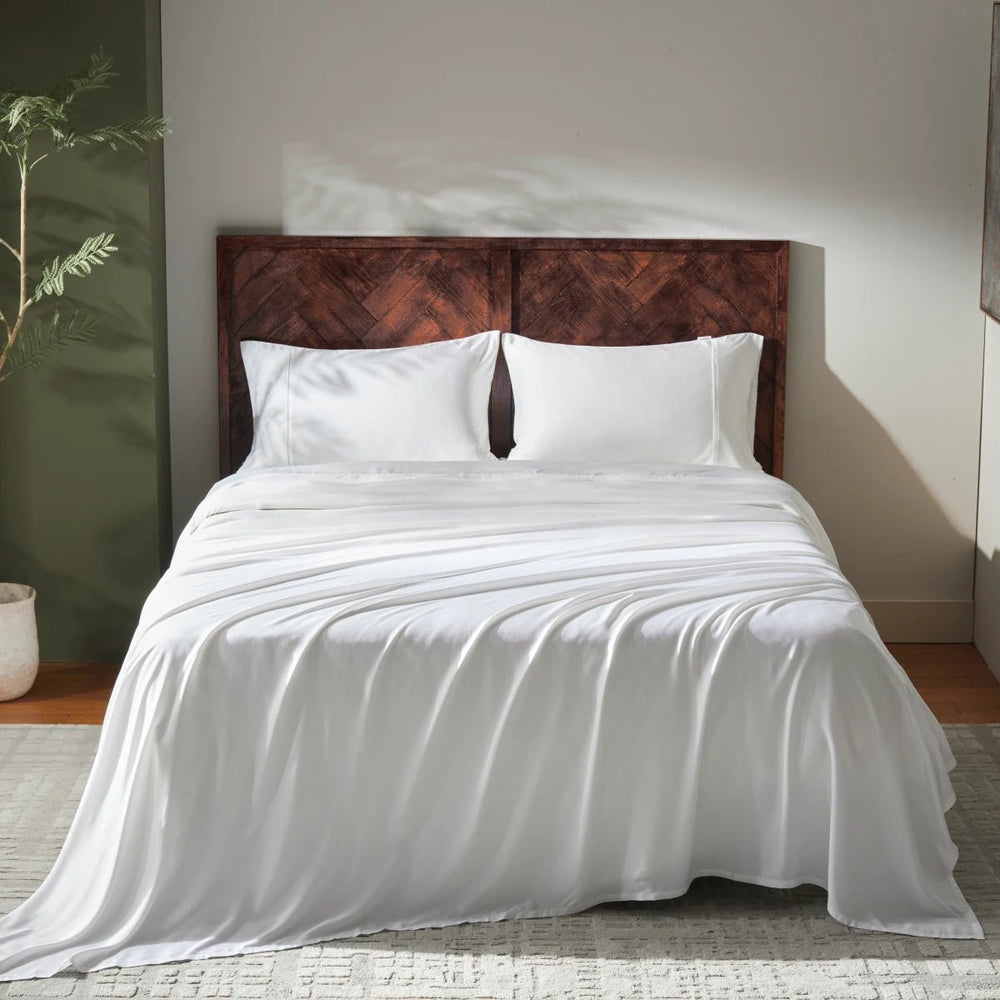
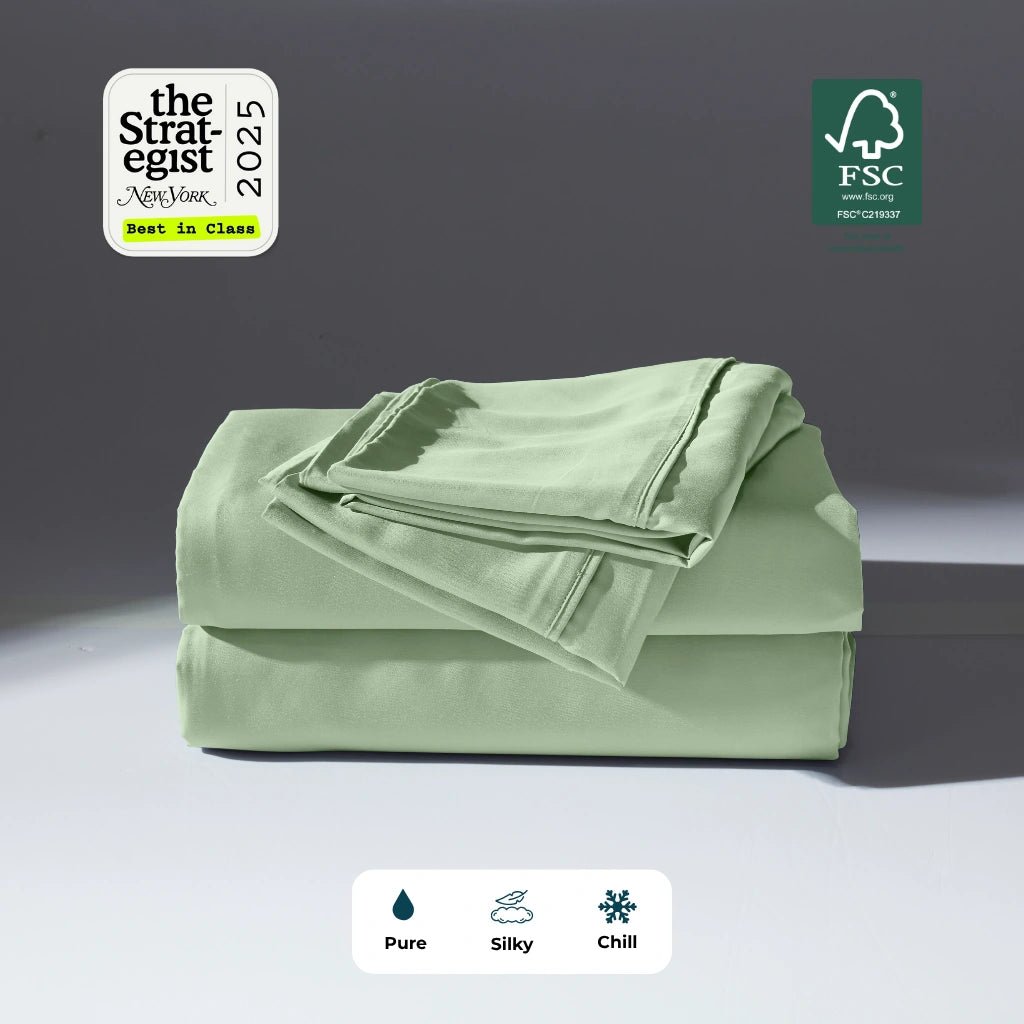

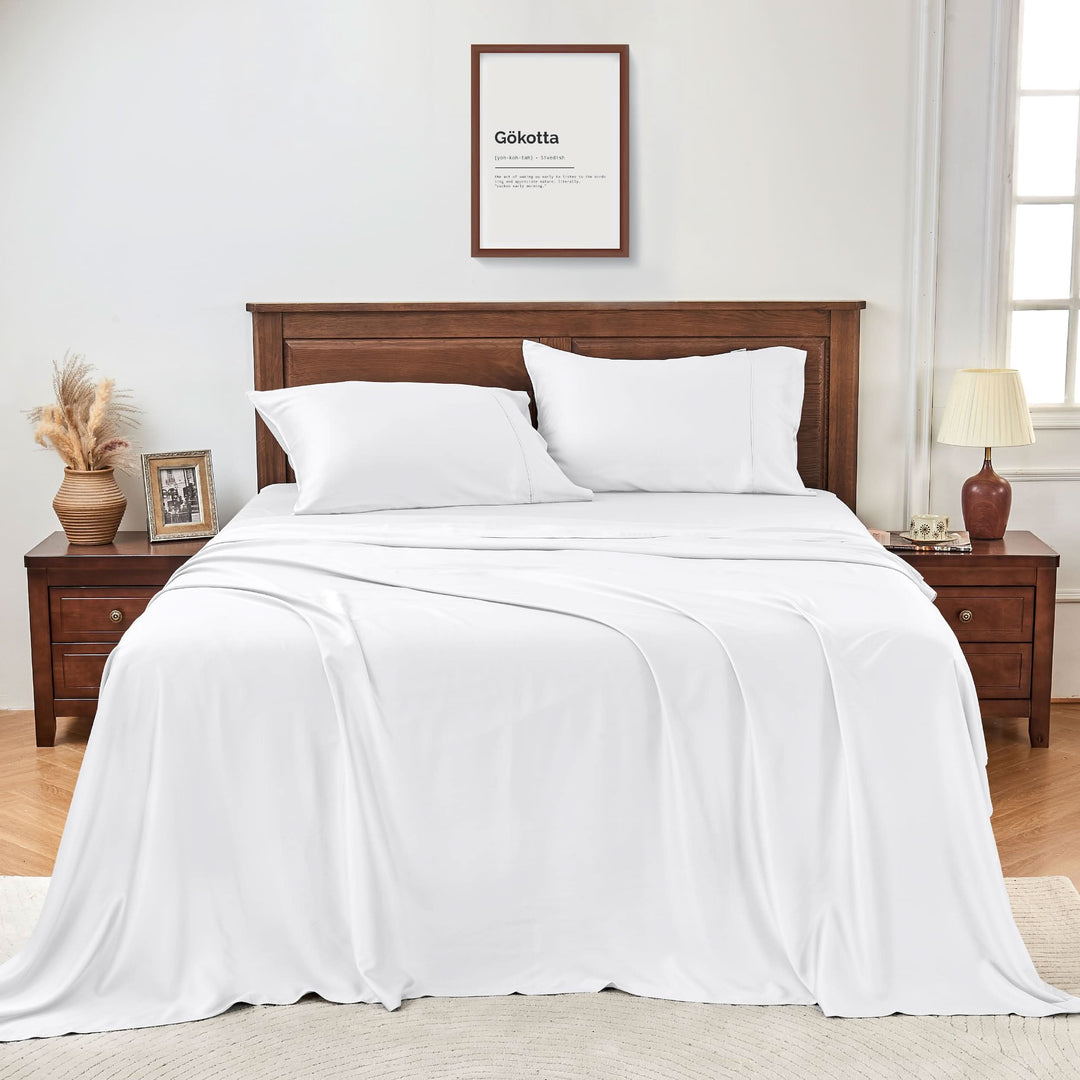
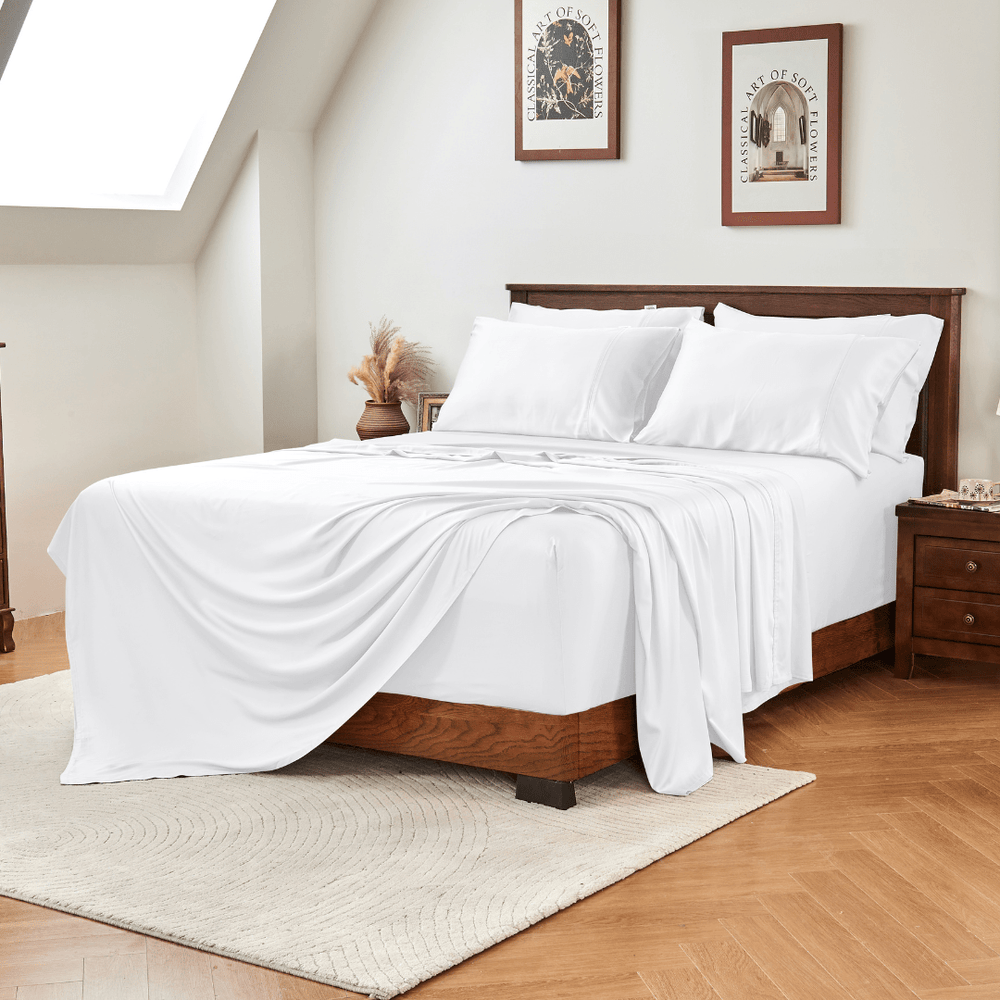


Dejar un comentario